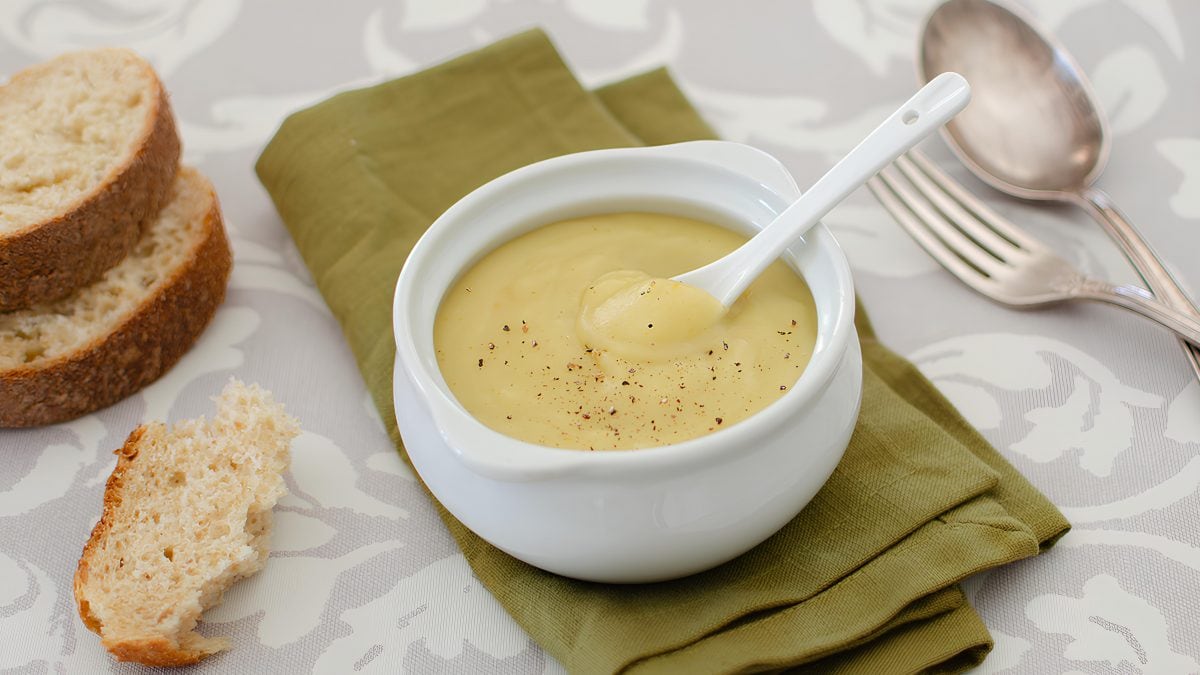
Velouté Sauce is a creamy and delicate mother sauce, made from a butter and flour roux to which vegetable broth is added. Usually seasoned with a pinch of salt and ground black pepper, it can also be flavored with nutmeg and is used to enrich numerous recipes or accompany other dishes.
Also known as velouté (pronounced as veh-loo-TAY), it can be prepared in different variations depending on the type of broth used: Auguste Escoffier, chef and author of French gastronomy manuals, also mentions veal, chicken, and fish veloutés. Bringing it to the table is very simple, but it requires a little care and scrupulously following the steps and timing, so that it remains both full-bodied and tender.
Simply melt the butter over low heat, whisk it into the flour until smooth, then add the vegetable stock and bring to a simmer, stirring constantly. Once thickened, season with salt and pepper and can be used immediately as a base for other recipes.
What is a Velouté Sauce?
Velouté sauce, one of the five French “mother sauces” codified by Auguste Escoffier in the early 20th century, has its roots in classic French cuisine, where it was created as a delicate base from roux and stock to accompany poultry, fish, and vegetables. Its name, meaning “velvety” in French, reflects its smooth texture and refined character. Over time, velouté spread beyond France through haute cuisine and the training of chefs worldwide, becoming a foundational element in professional kitchens.
In the United States, its influence grew alongside the rise of French-trained chefs and culinary schools, where it was taught as part of classical cooking techniques. Today, velouté appears not only in fine dining restaurants but also in modern American cuisine, often adapted with local ingredients and used as the base for elegant sauces, gravies, and soups—showing how a cornerstone of French gastronomy has taken root in kitchens around the world.
Pro Tips for The Best Velouté Sauce
- Use a high-quality, clear stock—traditionally chicken, veal, or fish. The better your stock, the richer and more flavorful the sauce.
- Cook equal parts butter and flour just long enough to remove the raw flour taste but not so much that it browns. A pale roux is essential for velouté’s delicate flavor.
- Whisk in warm stock a little at a time to avoid lumps. This helps create the sauce’s smooth, velvety texture.
- Let the sauce cook gently over low heat. A slow simmer thickens it evenly and prevents separation.
- For restaurant-quality results, pass the sauce through a fine-mesh sieve or chinois to remove any clumps or impurities.
- Velouté is meant to be a base sauce, so season subtly with salt, white pepper, and perhaps a touch of nutmeg. Additional flavors can be layered in later if used as a derivative sauce.
- For extra richness and gloss, whisk in a small knob of cold butter or a splash of cream just before serving.
Is Velouté The Same as Gravy?
Velouté and gravy are similar but not the same. Velouté is a classic French mother sauce made from a pale roux and a light stock, designed as a refined base for many derivative sauces. Gravy, on the other hand, is typically made from pan drippings combined with flour and stock, giving it a deeper, roasted flavor and a more rustic character.
What Are the Common Mistakes When Making Velouté Sauce?
Even though velouté is considered one of the simplest of the French mother sauces, it can be tricky to get just right. Small mistakes in technique or timing often lead to lumps, odd textures, or unbalanced flavors. To help you master a perfectly smooth and elegant sauce every time, here are the most common issues that arise when making velouté—along with practical tips to fix or prevent them.
1. Lumpy Texture
One of the most frequent problems is a sauce full of lumps. This happens when stock is added too quickly to the roux. To fix it, always whisk in warm stock gradually, starting with just a little to form a smooth paste before adding the rest. If lumps still appear, strain the sauce through a fine sieve.
2. Raw Flour Taste
If the roux isn’t cooked long enough, velouté can have a chalky, raw flour flavor. Make sure to cook the butter and flour mixture for a minute or two until it loses that raw edge, but avoid browning it, since velouté requires a pale roux.
3. Sauce Too Thin
A velouté that doesn’t thicken properly usually means the roux-to-liquid ratio is off, or the sauce hasn’t simmered long enough. Let it cook gently for at least 20 minutes, stirring occasionally. If still thin, make a small extra roux and whisk it in.
4. Sauce Too Thick
On the other hand, if the sauce becomes overly thick and heavy, it likely reduced too much. Whisk in a bit more warm stock until you reach the desired velvety consistency.
5. Scorched Flavor
Cooking velouté over too high heat can cause it to stick, scorch, and develop a burnt taste. Always simmer on low and stir frequently, especially at the bottom of the pan. If it burns, unfortunately, the best solution is to start fresh.
6. Overpowering Seasoning
Velouté is meant to be mild and versatile, so heavy seasoning can ruin its balance. Add just a touch of salt, white pepper, or nutmeg, keeping in mind it may later be combined with other flavors.
What Can I Use Velouté Sauce For?
Velouté sauce is incredibly versatile and serves as the base for many classic French sauces, such as suprême, allemande, and vin blanc. On its own, it pairs beautifully with poultry, fish, and delicate vegetables, adding a smooth, velvety layer of flavor without overpowering the dish. In modern kitchens, chefs also use velouté as a refined alternative to gravy, a base for creamy soups, or a light finishing sauce that can be enriched with herbs, cream, or wine.
Can I Make Velouté Sauce Ahead of Time?
Yes, you can make velouté sauce ahead of time, but it’s best enjoyed fresh for its delicate texture. If you prepare it in advance, let it cool quickly, then store it in an airtight container in the refrigerator for up to 2–3 days. When reheating, warm it gently over low heat while whisking, and add a splash of stock or water if it has thickened too much.
Does It Freeze Well?
Velouté sauce can be frozen, but it doesn’t freeze as seamlessly as some other sauces because of its roux-and-stock base. When thawed, it may separate slightly or lose some of its silky texture. To get the best results, freeze it in small portions (like in ice cube trays or airtight containers), then thaw slowly in the fridge before reheating.
How to Store Any Leftovers
Leftover velouté sauce should be cooled quickly and stored in an airtight container in the refrigerator, where it will keep for 2–3 days. To prevent a skin from forming on the surface, press a piece of plastic wrap directly against the sauce before sealing the container.
Ingredients
How to Make Velouté Sauce
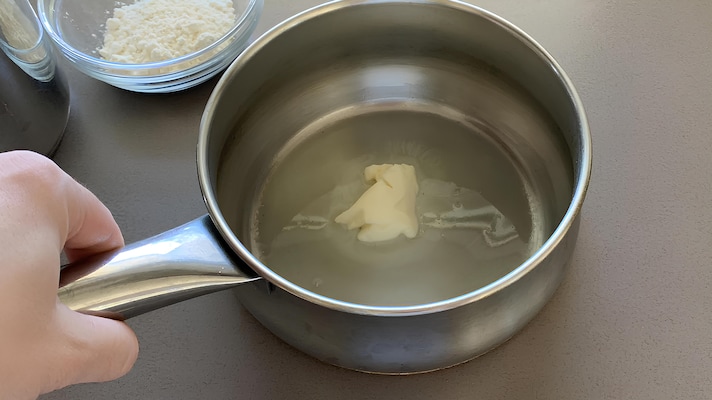
Melt the butter in a heavy-bottomed saucepan over very low heat.
Melt the butter in a heavy-bottomed saucepan over very low heat.
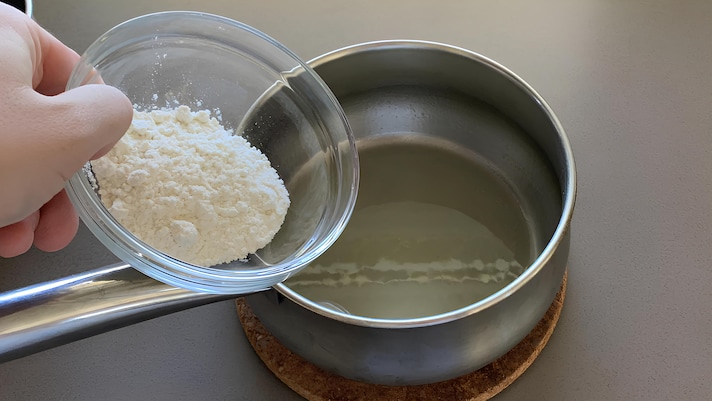
Add all the flour.
Add all the flour.
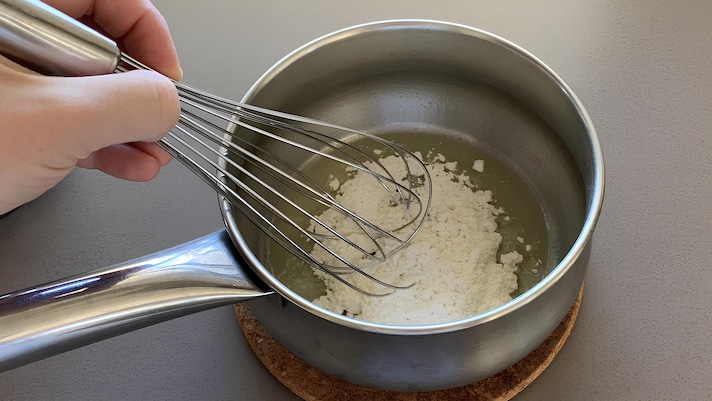
Mix immediately with a whisk, to avoid lumps forming.
Mix immediately with a whisk, to avoid lumps forming.
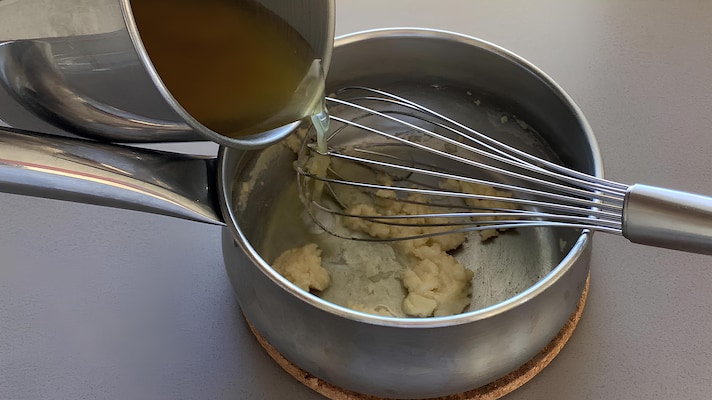
Once you have obtained a smooth cream, slowly pour in the boiling broth and continue mixing with the whisk.
Once you have obtained a smooth cream, slowly pour in the boiling broth and continue mixing with the whisk.
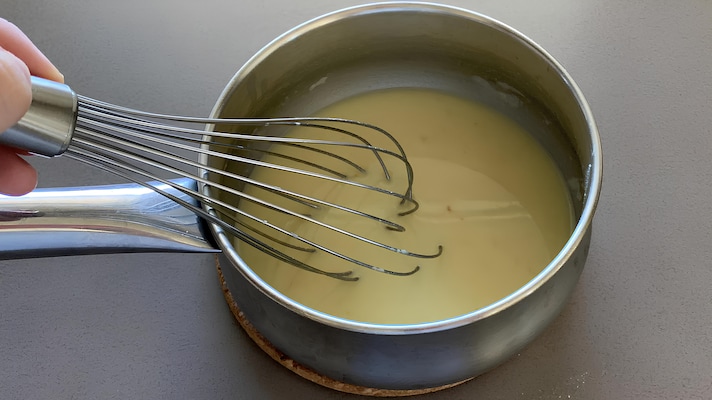
Never stop stirring throughout the cooking process and set the stove to a low flame. Season with salt and grind a little fresh black pepper.
Never stop stirring throughout the cooking process and set the stove to a low flame. Season with salt and grind a little fresh black pepper.
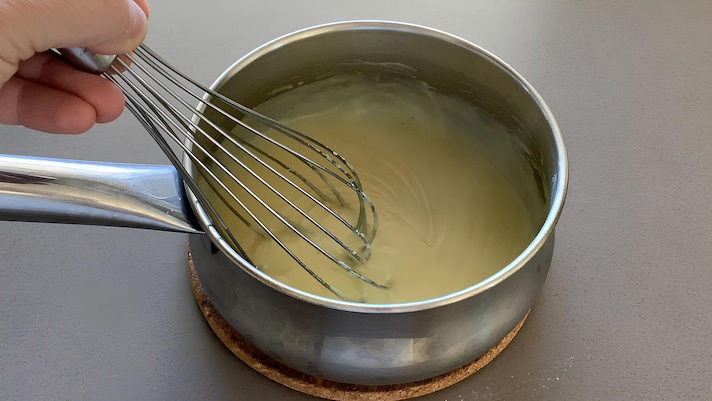
After a few minutes the sauce will begin to thicken.
After a few minutes the sauce will begin to thicken.
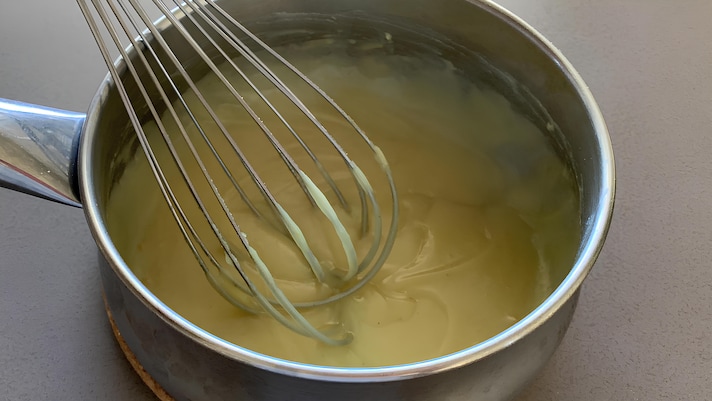
It will be ready when it takes on a creamy and velvety consistency.
It will be ready when it takes on a creamy and velvety consistency.
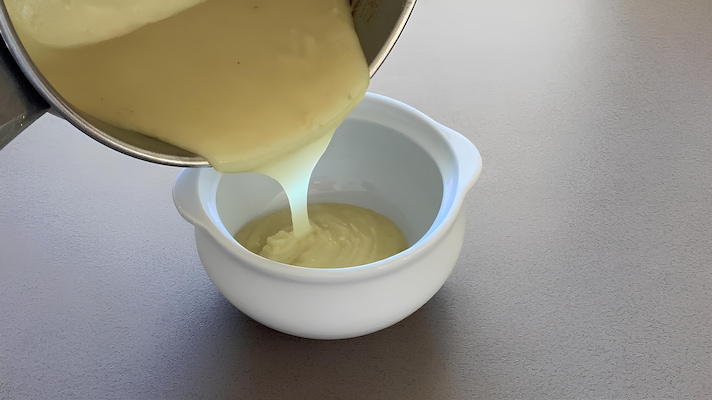
Transfer it immediately into a small bowl.
Transfer it immediately into a small bowl.

Enjoy the velvety sauce or use it as you like for your preparations.
Enjoy the velvety sauce or use it as you like for your preparations.
;Resize,width=767;)
